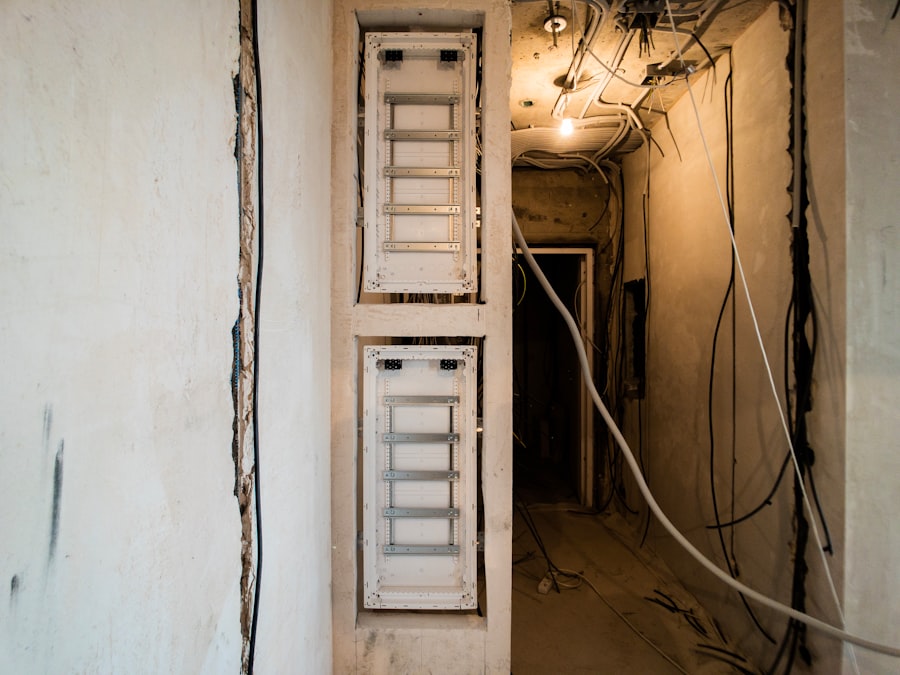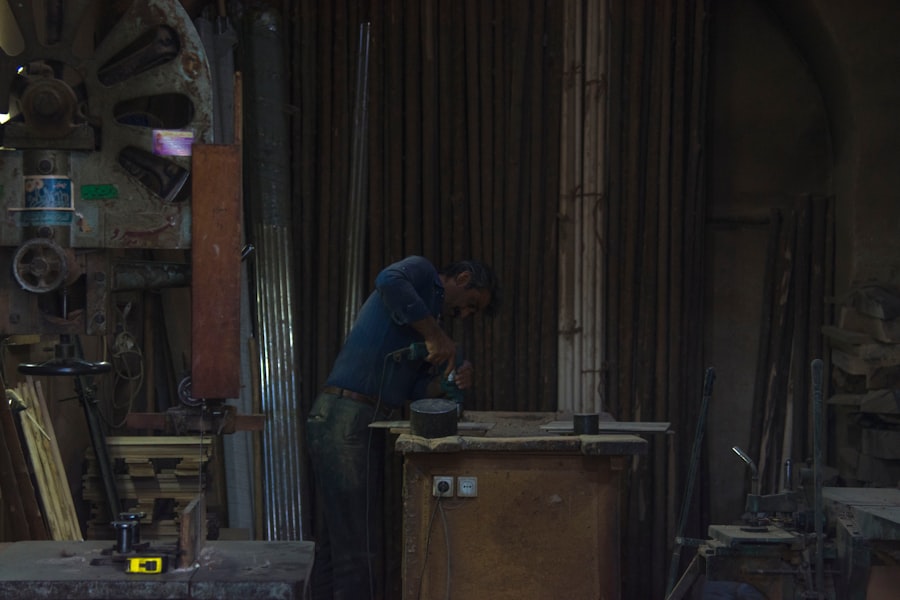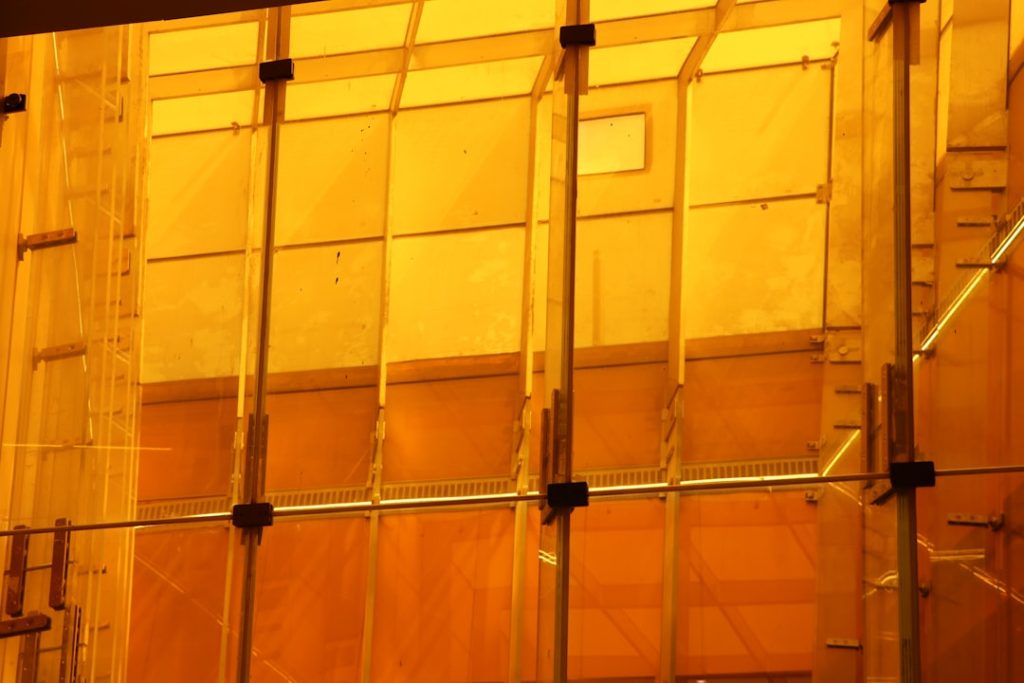Cabinet building is a craft that combines artistry with functionality, allowing individuals to create storage solutions that are both practical and visually appealing. At its core, cabinet building involves understanding the structure and purpose of cabinets, which serve as essential components in kitchens, bathrooms, and living spaces. The process begins with a clear vision of what the cabinet will be used for, whether it’s to store dishes, tools, or personal items.
This vision guides the builder in determining the size, shape, and style of the cabinet, ensuring that it meets both aesthetic and functional needs. The fundamental principles of cabinet building revolve around design, construction techniques, and material selection. A well-built cabinet not only enhances the beauty of a space but also provides durability and longevity.
Understanding the basic components of a cabinet—such as the frame, doors, shelves, and hardware—is crucial for anyone looking to embark on this woodworking journey. Each element plays a significant role in the overall functionality and appearance of the finished product. For instance, the choice of door style can dramatically alter the visual impact of a cabinet, while the internal shelving system can dictate how effectively it serves its intended purpose.
Key Takeaways
- Mastering cabinet building starts with understanding fundamental concepts and processes.
- Choosing high-quality materials is crucial for durable and attractive cabinets.
- Proper tools and techniques ensure precision and efficiency in construction.
- Thoughtful design and planning enhance both functionality and visual appeal.
- Skilled craftsmanship and attention to detail result in strong, long-lasting cabinets.
Selecting the Right Materials for Quality Cabinets
Choosing the right materials is one of the most critical steps in cabinet building, as it directly influences both the durability and aesthetic appeal of the final product. Wood is often the material of choice for cabinets due to its natural beauty and versatility. Hardwoods such as oak, maple, and cherry are popular for their strength and resistance to wear.
Each type of wood has its unique grain patterns and colors, allowing builders to select materials that align with their design vision. For example, oak offers a classic look with its prominent grain, while cherry provides a rich, warm tone that deepens over time. In addition to solid wood, engineered materials like plywood and MDF (medium-density fiberboard) are also widely used in cabinet construction.
Plywood is favored for its stability and resistance to warping, making it an excellent choice for cabinet boxes. MDF, on the other hand, is often used for painted cabinets due to its smooth surface that allows for a flawless finish. When selecting materials, it’s essential to consider not only aesthetics but also the intended use of the cabinet.
For instance, cabinets in high-moisture areas like bathrooms may require water-resistant finishes or materials to prevent damage over time.
Essential Tools and Techniques for Cabinet Building

Equipping oneself with the right tools is paramount in cabinet building, as they significantly affect the quality and efficiency of the work. Essential tools include a table saw for precise cuts, a router for shaping edges and creating joinery, and a drill for making holes for screws and hardware. Additionally, clamps are indispensable for holding pieces together during assembly, ensuring that joints are tight and secure.
A good set of measuring tools, such as a tape measure and square, is also crucial for achieving accurate dimensions throughout the building process. Techniques in cabinet building vary widely depending on the design and materials used. For instance, understanding how to make accurate cuts is fundamental; using a table saw with a proper fence can help achieve straight edges that fit together seamlessly.
Joinery techniques such as dovetail joints or pocket holes can enhance both strength and aesthetics. Dovetail joints are often used in drawer construction due to their interlocking design that provides exceptional strength. Conversely, pocket hole joinery is favored for its simplicity and speed, making it ideal for beginners or those looking to build cabinets quickly without sacrificing quality.
Designing and Planning for Functional and Aesthetic Cabinets
| Metric | Description | Recommended Value/Range | Importance |
|---|---|---|---|
| Cabinet Depth | Distance from front to back of the cabinet | 12″ to 24″ (30 cm to 61 cm) | High – affects storage capacity and usability |
| Cabinet Height | Vertical measurement of the cabinet | 30″ to 42″ (76 cm to 107 cm) for base cabinets | High – impacts ergonomics and aesthetics |
| Door Overlay | Amount the door covers the cabinet frame | Full overlay (covers frame completely) or partial overlay | Medium – influences style and ease of access |
| Material Thickness | Thickness of cabinet panels and doors | 3/4″ (19 mm) standard for durability | High – affects strength and appearance |
| Handle/Knob Placement | Positioning of hardware for ease of use | 2-3″ (5-7.5 cm) from edge or center of door/drawer | Medium – impacts functionality and design |
| Storage Capacity | Volume available inside cabinets | Varies by cabinet size; optimize for user needs | High – key for functional design |
| Finish Type | Surface treatment for aesthetics and protection | Matte, gloss, semi-gloss, or textured finishes | High – defines style and durability |
| Lighting Integration | Incorporation of lighting for visibility and ambiance | Under-cabinet LED strips or interior cabinet lights | Medium – enhances functionality and aesthetics |
| Ergonomic Reach | Ease of access to cabinet contents | Design for 15″ to 48″ (38 cm to 122 cm) height range | High – critical for user comfort |
| Ventilation | Airflow to prevent moisture buildup | Incorporate vents or gaps where necessary | Low to Medium – important in humid areas |
The design phase is where creativity meets practicality in cabinet building. A well-thought-out design not only enhances the visual appeal of a space but also maximizes functionality. When planning a cabinet design, it’s essential to consider factors such as dimensions, layout, and storage needs.
For example, in a kitchen setting, one might incorporate pull-out shelves or lazy Susans to make accessing items easier. Additionally, considering the overall style of the room—be it modern, traditional, or rustic—can guide decisions regarding door styles, finishes, and hardware. Sketching out designs or using computer-aided design (CAD) software can help visualize how the cabinets will fit into the intended space.
This planning stage allows builders to experiment with different configurations before committing to a final design. It’s also an opportunity to think about color schemes and finishes that will complement existing decor. For instance, pairing white shaker-style cabinets with brass hardware can create a timeless look that suits various interior styles.
Ultimately, effective design balances aesthetics with practicality, ensuring that the cabinets serve their purpose while enhancing the overall ambiance of the room.
Joinery and Assembly: Building Strong and Durable Cabinets
Joinery is a critical aspect of cabinet building that determines the strength and durability of the finished product. The choice of joinery method can significantly impact how well the cabinet withstands daily use. Traditional methods such as mortise-and-tenon joints provide exceptional strength by interlocking pieces of wood at right angles.
This technique is often used in frame construction for doors or face frames due to its robustness. On the other hand, modern methods like pocket hole joinery offer ease of assembly while still providing adequate strength for most applications. Assembly techniques also play a vital role in ensuring that cabinets are built to last.
Proper alignment during assembly is crucial; misaligned pieces can lead to gaps or structural weaknesses. Using clamps during assembly helps maintain alignment while glue dries or screws are inserted. Additionally, reinforcing joints with screws or dowels can enhance stability further.
Builders should also pay attention to how shelves are supported within cabinets; adjustable shelf pins allow for flexibility in storage options while ensuring that shelves remain level under weight.
Finishing Touches: Adding Style and Personality to Cabinets

The finishing touches applied to cabinets can dramatically alter their appearance and character. Staining or painting cabinets not only enhances their visual appeal but also protects the wood from moisture and wear. Stains come in various shades that can highlight the natural grain of the wood while providing a protective layer against scratches and spills.
For those looking for a more uniform look, paint offers endless color options that can match any decor style. Hardware selection is another crucial aspect of finishing cabinets. Knobs and pulls come in various styles—from sleek modern designs to ornate vintage options—allowing builders to add personal flair to their creations.
The choice of hardware can complement or contrast with the cabinet finish, creating visual interest. Additionally, incorporating features like soft-close hinges or drawer slides can enhance functionality while adding a touch of luxury to the overall design.
Troubleshooting Common Issues in Cabinet Building
Even experienced builders encounter challenges during cabinet construction; however, knowing how to troubleshoot common issues can save time and frustration. One frequent problem is misalignment during assembly, which can lead to doors not closing properly or uneven gaps between panels. To address this issue, builders should double-check measurements before cutting pieces and use clamps to hold components in place during assembly.
Another common issue is wood movement due to changes in humidity or temperature. Wood naturally expands and contracts; therefore, it’s essential to allow for this movement when designing cabinets. Using floating panels in doors or incorporating expansion gaps can help mitigate issues related to wood movement over time.
Additionally, ensuring that all joints are properly glued and secured will help maintain structural integrity despite these natural changes.
The Importance of Quality Craftsmanship in Cabinet Building
Quality craftsmanship is paramount in cabinet building; it not only affects the durability of the cabinets but also their overall aesthetic appeal. Attention to detail during every stage of construction—from selecting materials to applying finishes—ensures that each cabinet meets high standards of quality. Skilled craftsmanship results in cabinets that not only function well but also stand out as beautiful pieces within a home.
Investing time in learning techniques and honing skills pays off in the long run; well-crafted cabinets can last for decades while maintaining their beauty and functionality. Moreover, quality craftsmanship often translates into increased value for homeowners; custom-built cabinets can significantly enhance property value compared to mass-produced alternatives. Ultimately, taking pride in one’s work leads to satisfaction not only for the builder but also for those who enjoy using these thoughtfully designed storage solutions in their daily lives.



